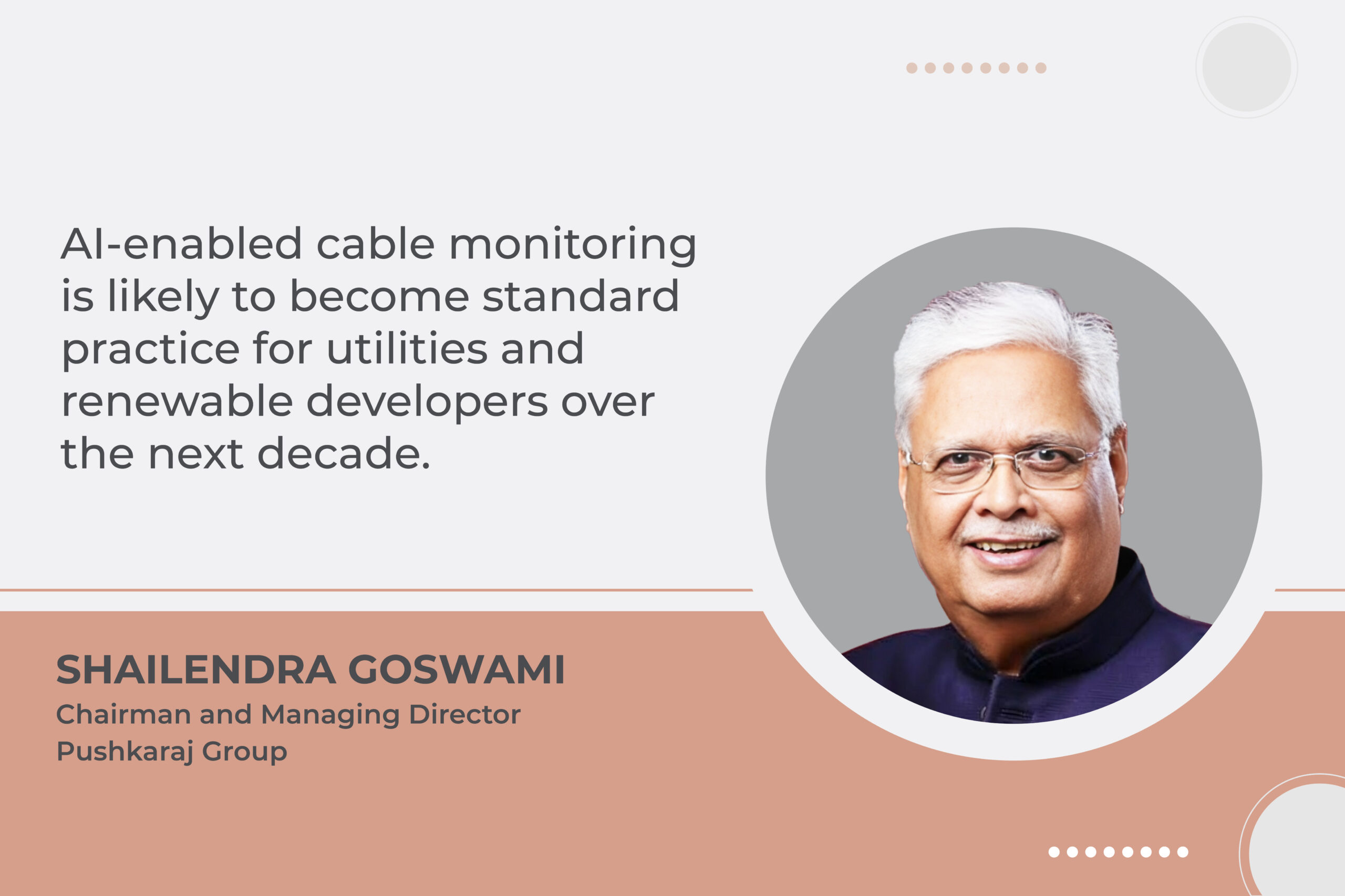Cable industry shifting from commodity wires to high-performance solutions
By Staff Report September 24, 2025 7:31 pm IST
By Staff Report September 24, 2025 7:31 pm IST

The industry aims to cut import dependence for EHV/HVDC, subsea and nuclear-grade solutions over the next 5 to 7 years.
The clean energy surge in the country, now surpassing 50 per cent non-fossil capacity, is reigniting the wires and cables industry. The sector is evolving from basic/HV wires to high-performance, specialised solutions aimed at supporting renewables, green hydrogen, and nuclear. Shailendra Goswami shares his expertise with EPR, explaining the growing trends in the wires and cables sector.
How is the cable industry in India transitioning from commodity wires to high-performance, strategic solutions amid clean energy expansion?
The push for clean energy, HVDC transmission, offshore wind and eventually green hydrogen and nuclear is exposing a gap in high-performance cable and accessory manufacturing. Much of this has historically been imported from Europe or East Asia. The ecosystem is now repositioning itself in several ways, with a policy push for localisation, capacity expansion by Indian majors, JV, and technology partnerships. The accessory manufacturing, focusing on R&D and testing infrastructure, raw material security, and future-ready segments like offshore wind, nuclear and hydrogen, is also reshaping this ecosystem.
The country’s cable ecosystem is actively transitioning from a commodity wire producer to a strategic high-performance supplier. The industry aims to cut import dependence for EHV/HVDC, subsea and nuclear-grade solutions over the next 5 to 7 years through policy support, capacity expansion, JVs, indigenous R&D and accessory localisation.
How is the wires and cables industry adapting to emerging segments like green hydrogen, offshore wind and nuclear energy?
These emerging clean-energy segments bring very different operating environments, so the wires and cables industry is actively preparing with new materials, designs and accessories.
Each of these segments is forcing cable makers to move beyond conventional power transmission toward specialised, high-performance engineered solutions. Green hydrogen safe, explosion-proof, cryogenic-compatible cables are being manufactured. In the offshore wind segment, the makers are focused on subsea HV export, dynamic floating cables and wet-design array systems. Also, in the nuclear segment, cable makers are considering radiation-resistant, safety-class, long-life cables with stringent certification.
How will AI-enabled cable monitoring and digital twins transform utility and renewable projects?
AI-enabled cable monitoring is likely to become standard practice for utilities and renewable developers over the next decade. The shift is already underway in pilot deployments due to several key factors: the high stakes of failure, the explosion of sensor data, integration with smart grids, and the need for cost and technology maturity.To cite an example, pilot projects under Green Energy Corridor include fibre-optic cable monitoring, and some Indian cable OEMs are partnering with AI firms to offer bundled condition-monitoring solutions.
The next step involves cabling digital twins, where AI models simulate lifecycle degradation under real conditions, helping utilities plan capex and avoid catastrophic failures.
AI-enabled cable monitoring is on track to become a de facto standard for large-scale renewable and utility projects, especially in offshore wind, HVDC corridors and critical hydrogen/nuclear facilities. For smaller rooftop behind-the-meter projects, it will remain optional in the near term due to cost.
How can collaboration transform cables into intelligent, self-monitoring assets for India’s future renewable and nuclear grid?
Collaboration between cable manufacturers, technology providers, and utilities will be absolutely central to shaping India’s (and the global) future grid, especially with renewables, hydrogen, and nuclear integration. Each party has traditionally worked in silos (OEMs supplying, utilities operating, tech firms providing monitoring), but the future grid demands joint innovation across the value chain. Collaboration will turn cables from being just a ‘passive commodity’ into active, intelligent grid assets. Manufacturers, utilities, and technology providers will collaborate to create self- monitoring, high-reliability transmission systems.
You can connect with him at:
linkedin.com/in/shailendragoswami5
We use cookies to personalize your experience. By continuing to visit this website you agree to our Terms & Conditions, Privacy Policy and Cookie Policy.